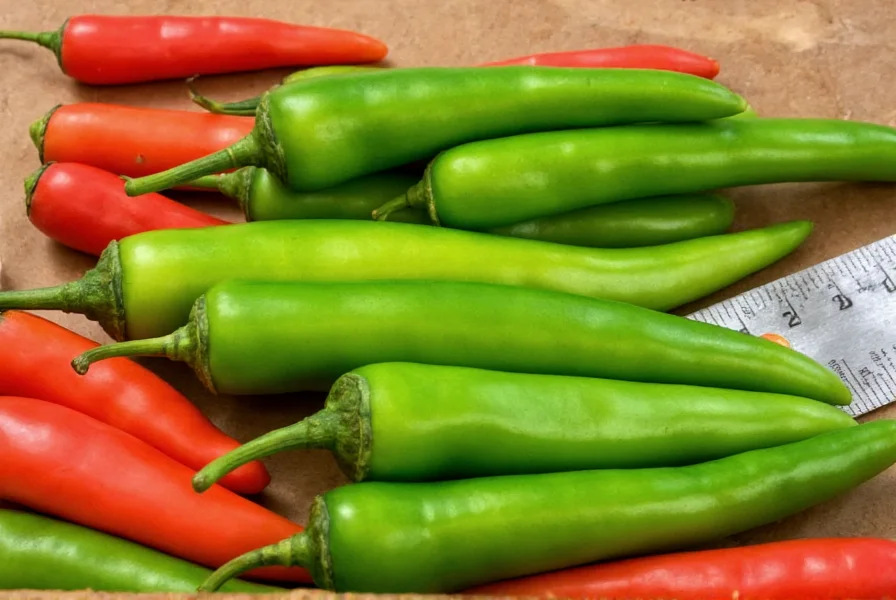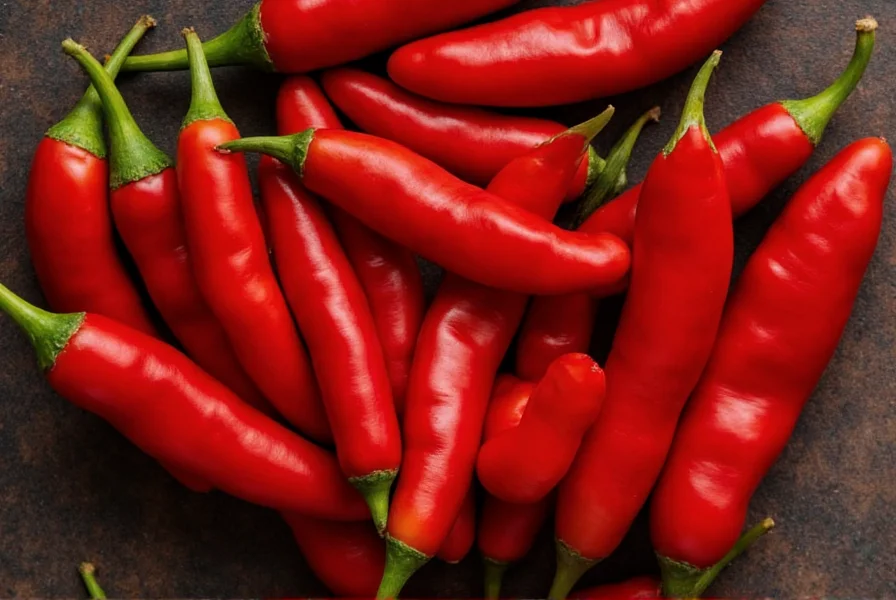Understanding the precise heat level of Fresno chilies helps home cooks and professional chefs make informed decisions when selecting peppers for recipes. These vibrant chilies, often mistaken for jalapeños, provide a distinctive flavor profile that enhances dishes while delivering a manageable heat experience.
What Are Fresno Chilies?
Fresno chilies (Capsicum annuum) are medium-sized chili peppers that mature from green to brilliant red. Named after Fresno, California, where they're extensively cultivated, these chilies feature a tapered shape with smooth, glossy skin. At their green stage, they resemble jalapeños but develop a more conical shape as they ripen to red.
Unlike some specialty chilies, Fresnos remain widely available in most grocery stores throughout the year. Their flavor profile combines moderate heat with bright, slightly fruity notes that intensify as they ripen. This versatility makes them valuable for salsas, sauces, and as a fresh garnish.

Understanding the Fresno Chili Heat Scale
The Scoville scale measures chili pepper pungency by determining capsaicin concentration. Fresno chilies register between 2,500–10,000 Scoville Heat Units (SHU), positioning them firmly in the medium heat category. This range places them just below jalapeños (2,500–8,000 SHU) on average, though there's significant overlap between the two peppers.
Several factors influence the actual heat level of individual Fresno chilies:
- Ripeness: Red Fresnos typically measure hotter than their green counterparts
- Growing conditions: Soil composition, water availability, and climate affect capsaicin production
- Plant genetics: Different cultivars produce varying heat levels
- Preparation method: Removing seeds and membranes reduces perceived heat
| Pepper Variety | Scoville Heat Units (SHU) | Heat Level Comparison |
|---|---|---|
| Fresno Chili | 2,500–10,000 | Medium |
| Jalapeño | 2,500–8,000 | Medium |
| Serrano | 10,000–23,000 | Medium-Hot |
| Habanero | 100,000–350,000 | Very Hot |
| Bell Pepper | 0 | Mild |
Culinary Applications of Fresno Chilies
The moderate heat level of Fresno chilies makes them exceptionally versatile in cooking. Their balanced spiciness allows them to enhance dishes without dominating other flavors. Chefs appreciate how Fresnos maintain their structure when cooked, unlike thinner-walled peppers that break down quickly.
Green Fresnos work well in:
- Fresh salsas and pico de gallo
- Creamy jalapeño poppers (as a substitute)
- Marinades for poultry and seafood
- Stir-fries where controlled heat is desired
Red Fresnos excel in:
- Roasted pepper sauces and coulis
- Chili con carne and other slow-cooked dishes
- Infused oils and vinegars
- As a colorful garnish for soups and stews

Common Misconceptions About Fresno Chili Heat
Many home cooks confuse Fresno chilies with jalapeños due to their similar appearance when green. However, several key differences exist:
Misconception: Fresnos and jalapeños have identical heat levels
Reality: While their ranges overlap, mature red Fresnos typically run hotter than standard jalapeños. The average Fresno measures about 5,000 SHU compared to jalapeño's 3,500 SHU.
Misconception: All Fresnos are uniformly hot
Reality: Significant variation occurs between individual peppers, even from the same plant. Always taste a small piece before adding to recipes.
Misconception: Fresnos can't be substituted for other medium-heat peppers
Reality: They make excellent substitutes for both jalapeños and serranos depending on ripeness and desired heat level.
Practical Tips for Working with Fresno Chilies
When incorporating Fresno chilies into your cooking, consider these practical tips to manage their heat effectively:
- Wear gloves when handling multiple chilies to prevent capsaicin transfer to sensitive areas
- Remove seeds and white membranes to reduce heat by up to 75% while retaining flavor
- Soak sliced chilies in vinegar or citrus juice to mellow their heat while enhancing flavor
- Balance heat with dairy products (yogurt, sour cream) or acidic components (lime juice, vinegar)
- Start with less and gradually increase quantity—you can always add more heat but cannot remove it
For those sensitive to spice, consider roasting Fresnos before use. The caramelization process transforms their flavor profile, reducing perceived heat while enhancing sweetness. This technique works particularly well for red Fresnos in sauces and stews.
FAQ
How does Fresno chili heat compare to jalapeño?
Fresno chilies generally range from 2,500–10,000 SHU while jalapeños measure 2,500–8,000 SHU. On average, Fresnos run slightly hotter than jalapeños, particularly when fully ripened to red. However, significant overlap exists between the two peppers' heat ranges, making them reasonable substitutes for one another in most recipes.
Can I substitute Fresno chilies for jalapeños in recipes?
Yes, Fresno chilies make an excellent substitute for jalapeños. Green Fresnos work well as a 1:1 replacement in most applications. For red Fresnos, which tend to be slightly hotter, consider using 25% less than the recipe specifies or remove more seeds and membranes to match jalapeño heat levels. The flavor profile differs slightly, with Fresnos offering a brighter, fruitier note.
Why do some Fresno chilies taste hotter than others?
Several factors cause heat variation in Fresno chilies: ripeness (red peppers are typically hotter than green), growing conditions (stress increases capsaicin production), individual plant genetics, and specific part of the pepper used. The seeds and white membranes contain the highest concentration of capsaicin, so removing these significantly reduces heat while preserving flavor.
Are red or green Fresno chilies hotter?
Red Fresno chilies are generally hotter than green ones. As chilies ripen and change color, they typically develop higher capsaicin concentrations. Red Fresnos often measure toward the upper end of the 2,500–10,000 SHU range, while green Fresnos tend to fall in the lower to middle portion. The red variety also develops more complex, slightly sweeter flavors as they mature.











 浙公网安备
33010002000092号
浙公网安备
33010002000092号 浙B2-20120091-4
浙B2-20120091-4